Nebraska is home to a wide variety of mushrooms, making it an ideal location for mushroom enthusiasts. The diverse terrain and climates of Nebraska provide the perfect conditions for these fungi to grow and thrive.
From the rolling hillsides in the north to the lush forests in the east, there are many different species of mushrooms that can be found in this state.
The most common mushrooms in Nebraska are white buttons, hen of the woods, turkey tails, chanterelles and morels. Below we’ll discuss these and more, how to recognize them, use and where to pick them.
List of Mushrooms in Nebraska
1. Hen of the woods
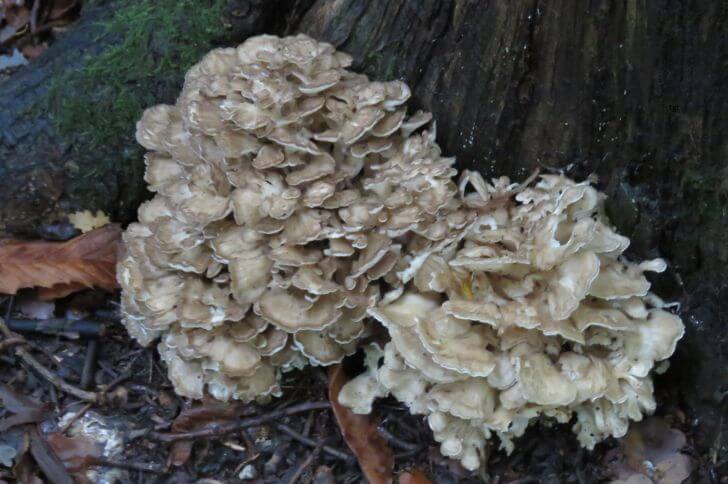
Mushrooms are a delicious, versatile addition to any meal. But if you’re looking for something a little bit different, consider Hen of the Woods mushrooms.
Scientifically called Grifola frondosa, this mushroom is found in hardwood forests and grows in clusters around aging oaks or stumps.
Identification:
The first step in identifying hen of the woods is to look for a large group of fan-like caps growing together from a single stem at the base. The color of these caps can range from light grayish to gray-brown. When touched, they should be firm.
Colloquially known as maitake, this Nebraska mushroom has a unique flavor that’s earthy and slightly sweet with a peppery undertone; it is well-suited for sautéing, grilling, roasting or frying. Also, if you come across a huge batch, you can pickle them to use later.
Where can you find maitake in Nebraska? These gray mushrooms prefer old oak trees and decaying oak leaf litter. They are fall mushrooms, so check them from August to November.
2. Oysters mushrooms
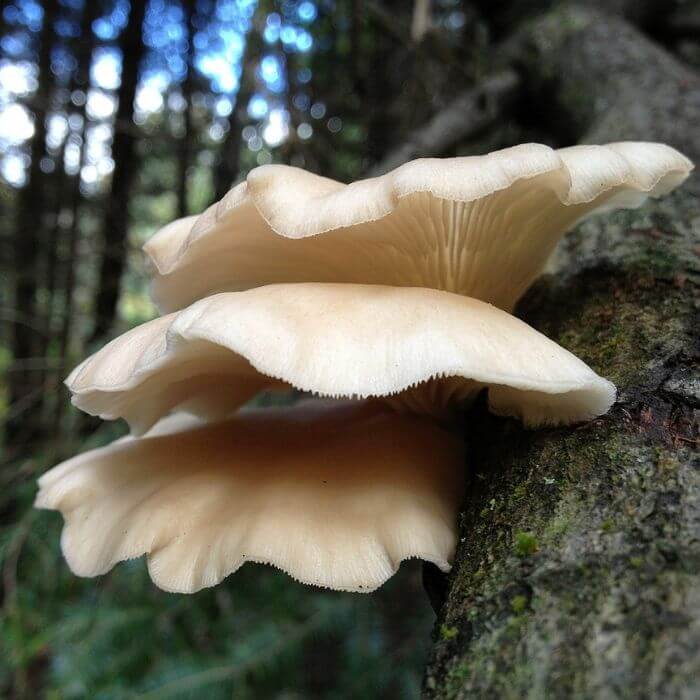
Oyster mushrooms have a lot of uses; from coffees to substitutes to mushroom soups, there are different ways to prepare them. These versatile mushrooms can be found in the wild or cultivated.
Identification:
In the wild, you may come across pearl oysters. This variety has funnel-like caps that range from white to brown.
Caps measure 2-10 inches and the underside is characterized by white gills. These mushrooms in Nebraska grow in clusters and we recommend you harvest younger fruiting bodies which are easy to clean and tastier.
These white mushrooms prefer unhealthy and dying trees, especially aspens and beech trees. You can find them in fall.
At home, using a mushroom grow kit, you can grow the white, blue, and pink mushroom variety. According to the Department of Agriculture, oyster mushroom production has grown in recent years. So you are assured of getting quality spores.
Mushroomers love them for their velvety texture and mild flavor.
3. Berkeley’s Polypore
Are there shelf fungi in Nebraska? Yes, berkeley’s polypores have occasionally been spotted in the Cornhusker State.
Identification:
This fungus is large with a cap averaging 3-12 inches wide. Like other shelf fungi, the berkeley’s polypore has a shelf-like fruiting body that is white-colored in young mushrooms turning yellowish or brownish with age.
Like oysters, the crowded caps grow from one stalk-like structure. When you touch the cap, you notice its velvety texture. Like other polypores they have pores that run down the stalk.
Where can you find this large polypore? It grows on oak trees from July to October. They do reappear around the same area every year.
4. Morels
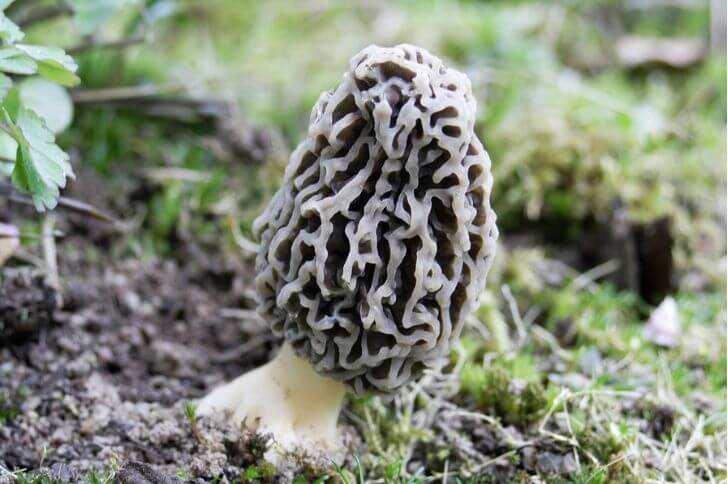
Do morels grow in Nebraska? Yes, a variety of morels have been spotted in NE. From Richardson to Buffalo to Harlan, these edible mushrooms can be found starting from mid-April peaking in May.
Identification:
The most common Nebraska morels include:
Yellow morels: Their caps range from whitish to yellow, often with a sponge-like texture, and they may grow in clusters or solitary formations.
The stems are also usually creamish in color and hollow within, as opposed to being solid like many other mushroom species. Yellow morels will also typically have ridged caps.
Black morels: These mushrooms belong to the morchella genus, and have a distinctive honeycomb-like cap with ridges running vertically along it.
The dark color of black morels makes them unique from other members of the same family; they may range in hue from dark brown, to gray, to almost black. The stems may also have ridges or pits on them for added texture.
Where can I find morels in Nebraska? Check in forested areas. They favor dead apples, elm, and white ash trees.
5. Chanterelle
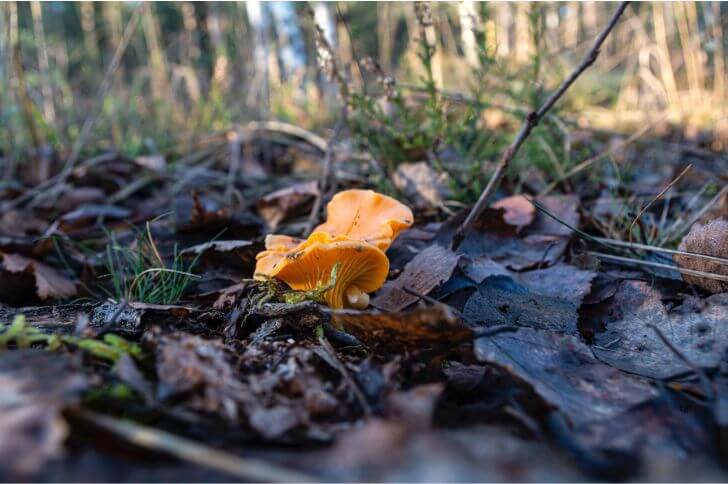
Chanterelle mushrooms have become increasingly popular in Nebraska due to their unique flavor and versatility. This type of mushroom is prized for its robust taste and pleasing texture, making it a sought-after ingredient.
Identification:
With their bright yellow to orange color, they stand out in any forest floor. Also you should look for a fleshy vase or trumpet shape with false gills.
The gill-like structures run down its stem to the base of it. Its cap will usually range from one and three inches in diameter, with a soft texture when touched.
Where is the best place to find chanterelles in Nebraska? These yellow mushrooms grow on the ground in coniferous forests.
Golden chanterelles can be used in omelets, porridge and in other dishes that require mushrooms with a fruity taste.
6. Meadow Mushrooms
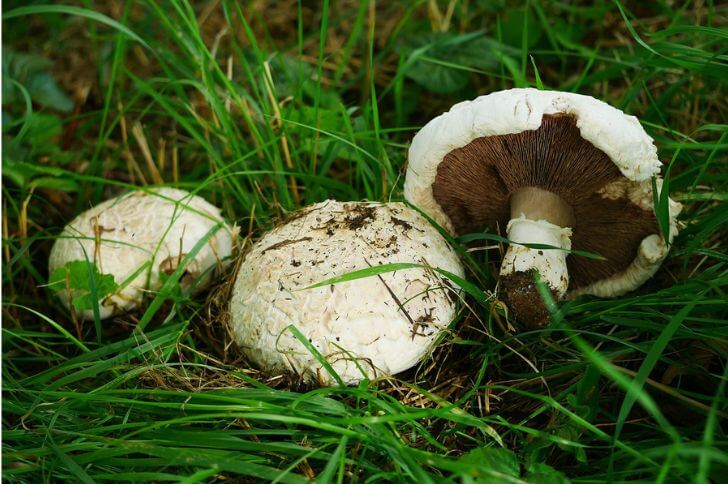
Often found in grassy areas and lawns, Meadow mushrooms are a unique type of fungi found throughout Nebraska.
Identification:
Meadow mushrooms have distinctive features that make them relatively simple for even beginner foragers to recognize. They typically have a white or cream-colored cap with pinkish gill plates underneath it. As they age gills become chocolate brown.
Their stalks are usually white or creamish in color. Additionally, meadow mushrooms emit a mushroomy smell.
Next, we recommend you cut your find in half and wait for 10-15 minutes. Meadows do not stain but a close lookalike, the yellow-staining mushroom does and it’s inedible.
Meadow mushrooms are closely related to button mushrooms and are edible. They also taste like their cousins. They can be pickled, frozen and dried for preservation.
7. Giant Puffball
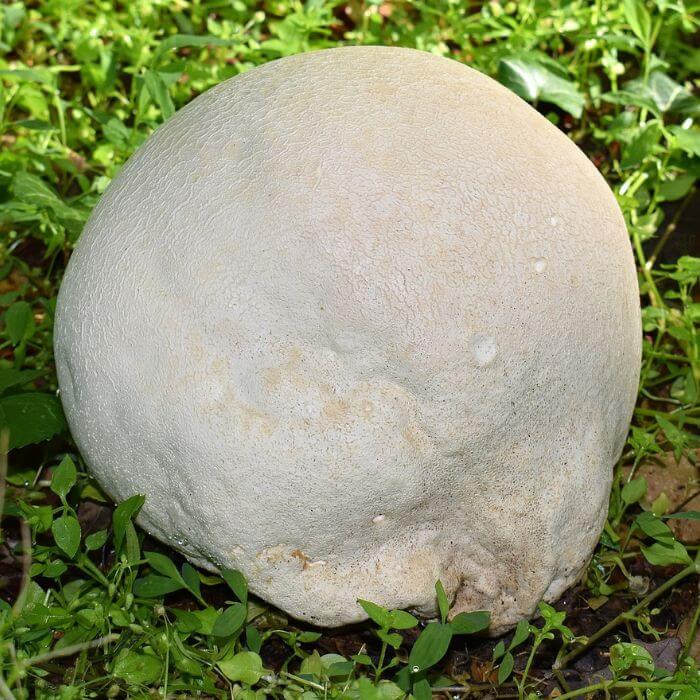
Mushrooms have long been a source of fascination for Nebraskans, and one variety stands out in particular: the Giant Puffball.
Identification:
This large volleyball-like mushroom can grow as large as sixteen inches in diameter, making it one of the largest mushrooms on earth.
The exterior of this mushroom is solid and white when young, but may turn yellow or brown as it ages. When cut open, the inside reveals a white fleshy texture much like that of a marshmallow.
Where can you find this large mushroom in Nebraska? It is most commonly found growing on grasslands or in open fields during autumn months when temperatures are mild and humidity is high.
Similar to other mushrooms, they are typically collected by hand after being identified through their distinctive shape and coloration.
8. Huitlacoche (Corn Smut)
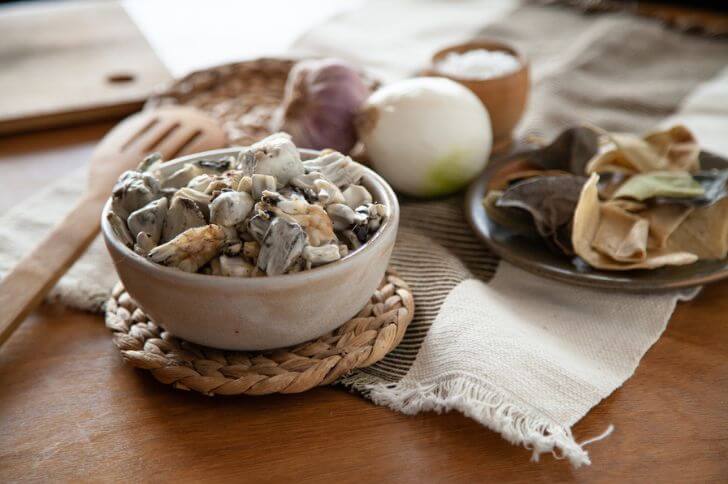
Nebraska is known for its large corn fields. Where there is corn there is huitlacoche or Corn smut.
Identification:
It is a unique mushroom-like fungus that grows on corn. Huitlacoche is an edible fungus that has a distinct flavor unlike any other mushroom.
It has been used in Mexican cuisine for centuries and is now becoming popular among foodies across the world.
The fungus is caused by the ustilago maydis pathogen which infects corn plants at flowering stage and causes them to produce galls filled with dark spores instead of grains of corn.
The galls are black or gray in color, have a soft texture, and taste like mushrooms when cooked. They can be eaten raw or cooked into various dishes such as tacos
9. Fly Agaric
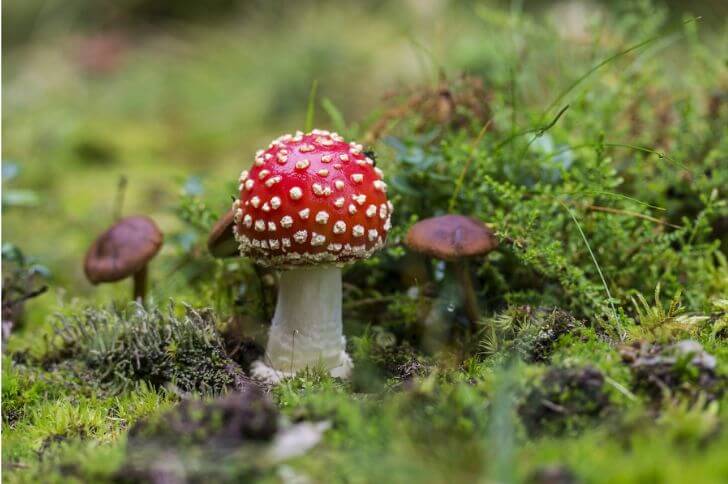
Are there red mushrooms in Nebraska? Fly agaric are red-colored fungi found all over the Midwest.
Identification:
Fly agaric is a distinctive mushroom that may be seen in wooded areas or near tree lines, often growing in rings.
Also known as Amanita muscaria, this bright red mushroom with white spots stands out from the landscape and can often be spotted easily by even novice foragers.
Although the fly agaric has a beautiful and attractive appearance, it is inedible. So take a few photos and move on to other edible species.
10. Inky Caps
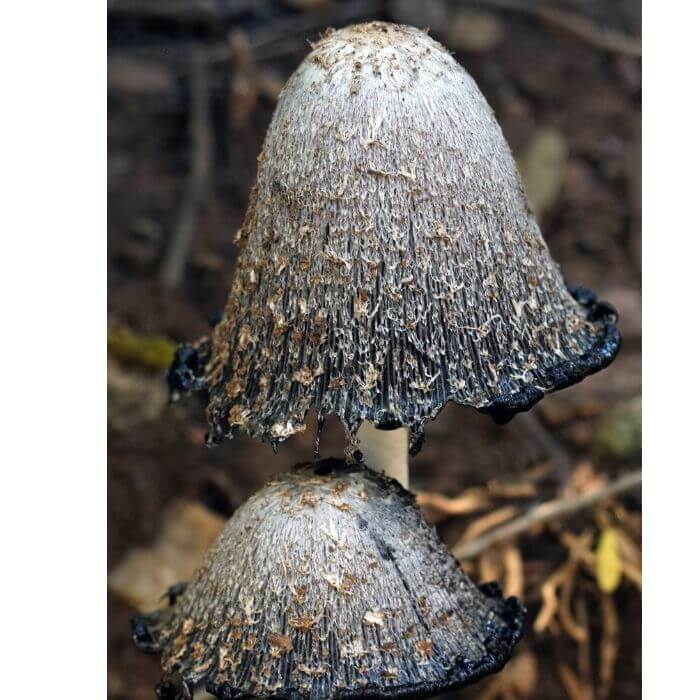
Inky caps are one of the most common mushrooms in the Cornhusker State. I find their fruiting bodies fascinating.
Identification:
They are found in tufts from late spring to autumn. When young, these Nebraska mushrooms have grayish-brown 1-3 inch caps. In maturity, the caps turn black and start ‘melting’. Underneath the gills are whitish and crowded. This fungus is inedible.
11. Dune Stinkhorn
Hold your nose! The dune stinkhorn does stink. But it is another wonderful fungus in Nebraska every mushroomer should know about.
Identification:
The Dune stinkhorn is an attractive, but unusual fungi that can be identified by its distinct shape and color. This fleshy fungus has a cylindrical stem with a small, morel-like cap at the top.
Its early growth stages are interesting. Initially it has an egg-shaped fruiting body encased in a pink-purple volva. Within a few days it reveals a unique shaped mushroom with a putrid smell! They are common in summer and at times may last all year round.
12. Dryad’s Saddle
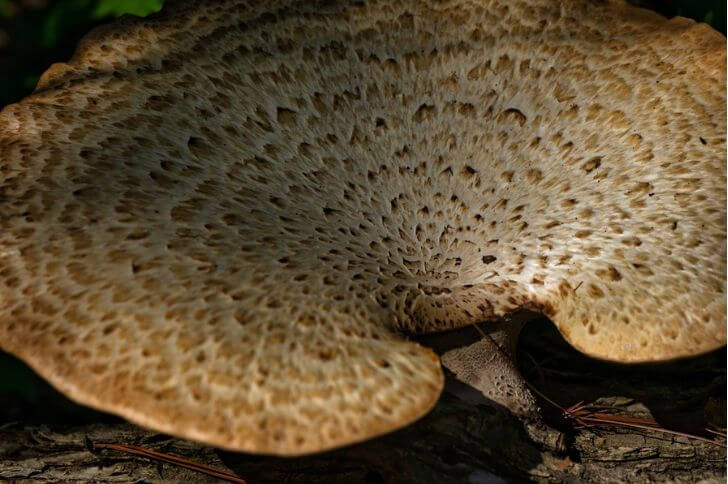
Dryad’s saddle is a type of mushroom that has been gaining popularity due to its unique texture and flavor.
Identification:
Native to Nebraska, this unusual-looking fungus does not have a close look alike. Dryad’s Saddle is common in spring and early summer. It grows on rotten logs, stumps, and dead standing trees, usually near oak, sycamore or beech.
Dryad’s Saddle has a striking appearance that makes it easy to identify from other species of mushrooms. Its shape is characterized by large fan-like caps with wavy edges and curved stems that attach to the broad top.
The cap can grow up to 15 inches wide and its coloring ranges from yellowish-brown to dark brown with scale-like markings. They have a ‘watermelon’ like taste.
13. Turkey Tails
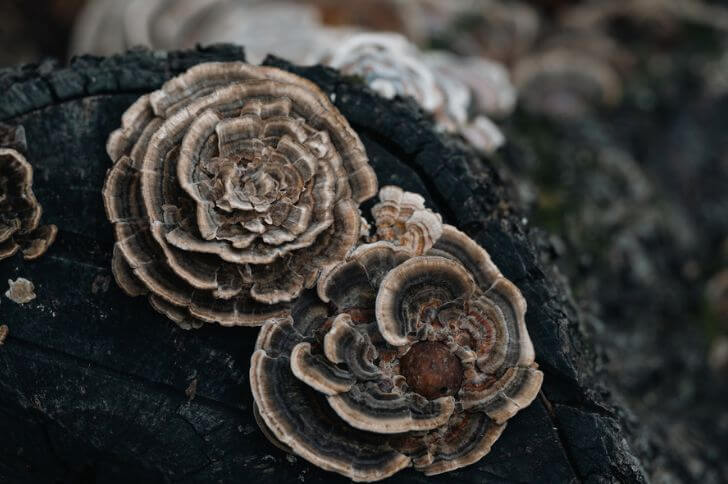
Turkey tail mushrooms vary in colors and have a few lookalikes. But luckily there are different ways to identify.
Identification:
Trametes versicolor or the Coriolus versicolor can be identified by their fan-shaped caps with wavy margins. The caps are small with a velvety surface. They come in a variety of colors ranging from gray to brown. The contrasting zones are beautiful to look at.
The underside of the cap has tiny pores instead of gills. Additionally, they dont have stems and are clustered together on dead logs or stumps.
FAQs
Where can I find chicken of the woods in Nebraska?
The best time to find chicken of the woods is typically late summer and early fall when temperatures are slightly cooler. You can spot them growing at the base of both living and dead oak trees or in areas with concentrated growths of hardwoods like maple or ash.
For better results, start your search during a dry period when humidity levels are low and there has been no recent rainfall for a few days. If you’re lucky, you might even find some nesting near elm trees which commonly grow in Nebraska parks and forests.
Where can I find mushrooms in Nebraska?
If you’re looking to find mushrooms in the Cornhusker state, there are a few places to start your search. Check areas such as Hitchcock Nature Center, Fontenelle Forest Nature Center, Platte River State Park, Ponca State Park and Schramm Park State Recreation Area.
When can you mushroom hunt in Nebraska?
The ideal time for mushroom hunting in Nebraska typically starts around mid-April or early May and continues through October.
However, this timeframe may fluctuate depending on what part of the state you’re planning on exploring—the eastern region may have a slightly different timeline than central or western areas due to its more humid climate.
The best way to ensure that you’re mushroom hunting at the right time is by continually checking local weather reports online or talking with experts in your area who know when peak season is likely to occur each year.
What month is best for morels in Nebraska?
The majority of wild morel mushrooms found in Nebraska usually appear from mid-April through May. This can vary depending on weather conditions, as warm temperatures and rainfall will encourage their growth throughout the spring months.
Sources:
Hi There,
My name is Jenny. I’m the Chief Editor at Try Green Recipes and besides making yummy and healthy foods for my kids, grandkids, and friends. I’m new to the blogging world but I believe what I have to share is unique and will bring joy to your home. If you are adventurous and want try something tasty, let’s get started.

